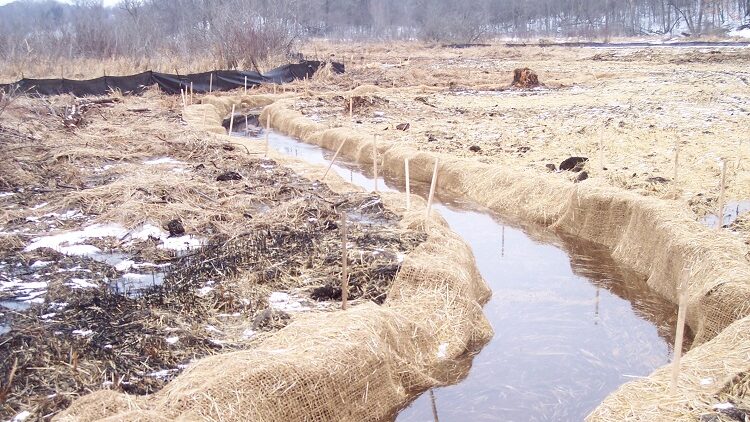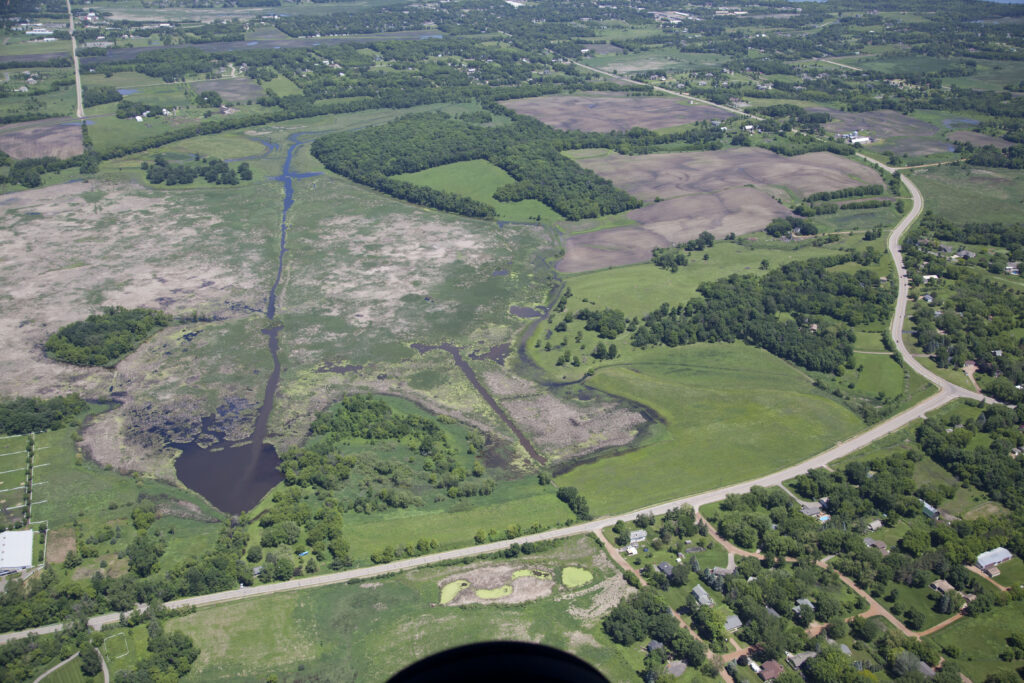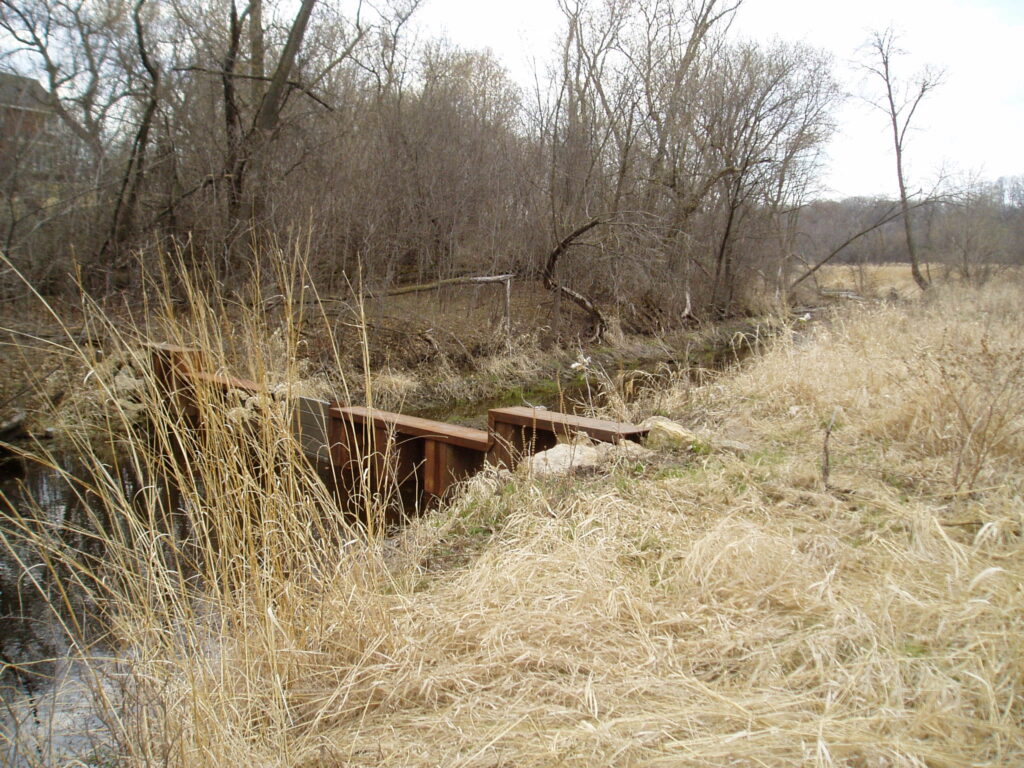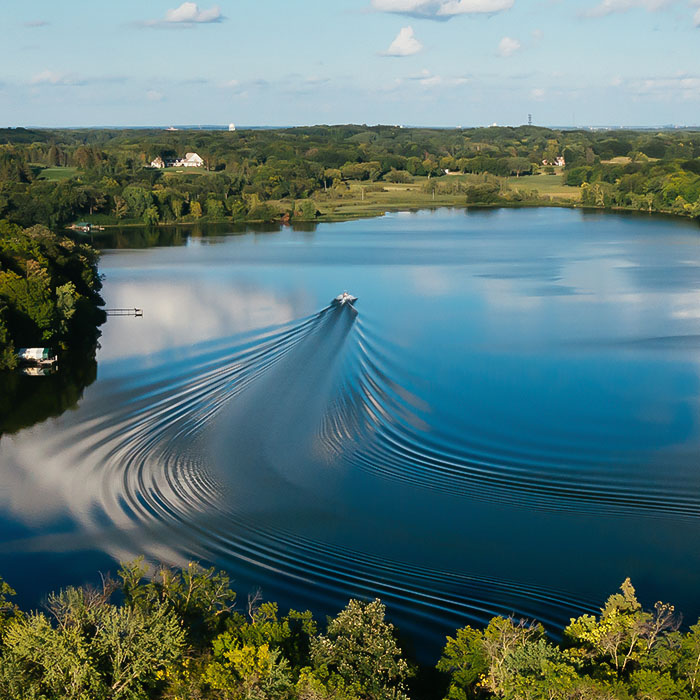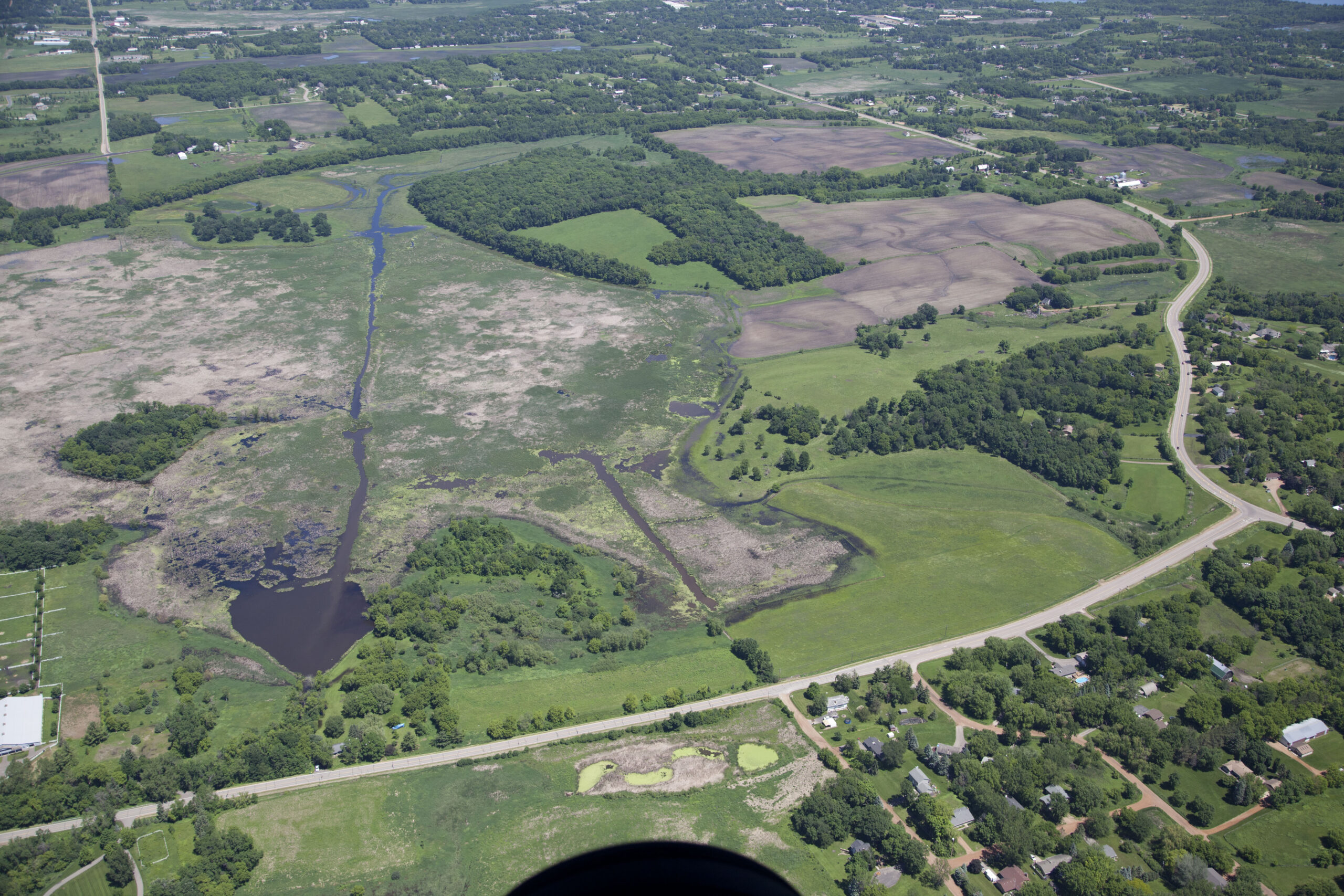
Painter Creek Restoration – Highway 26 Wetland
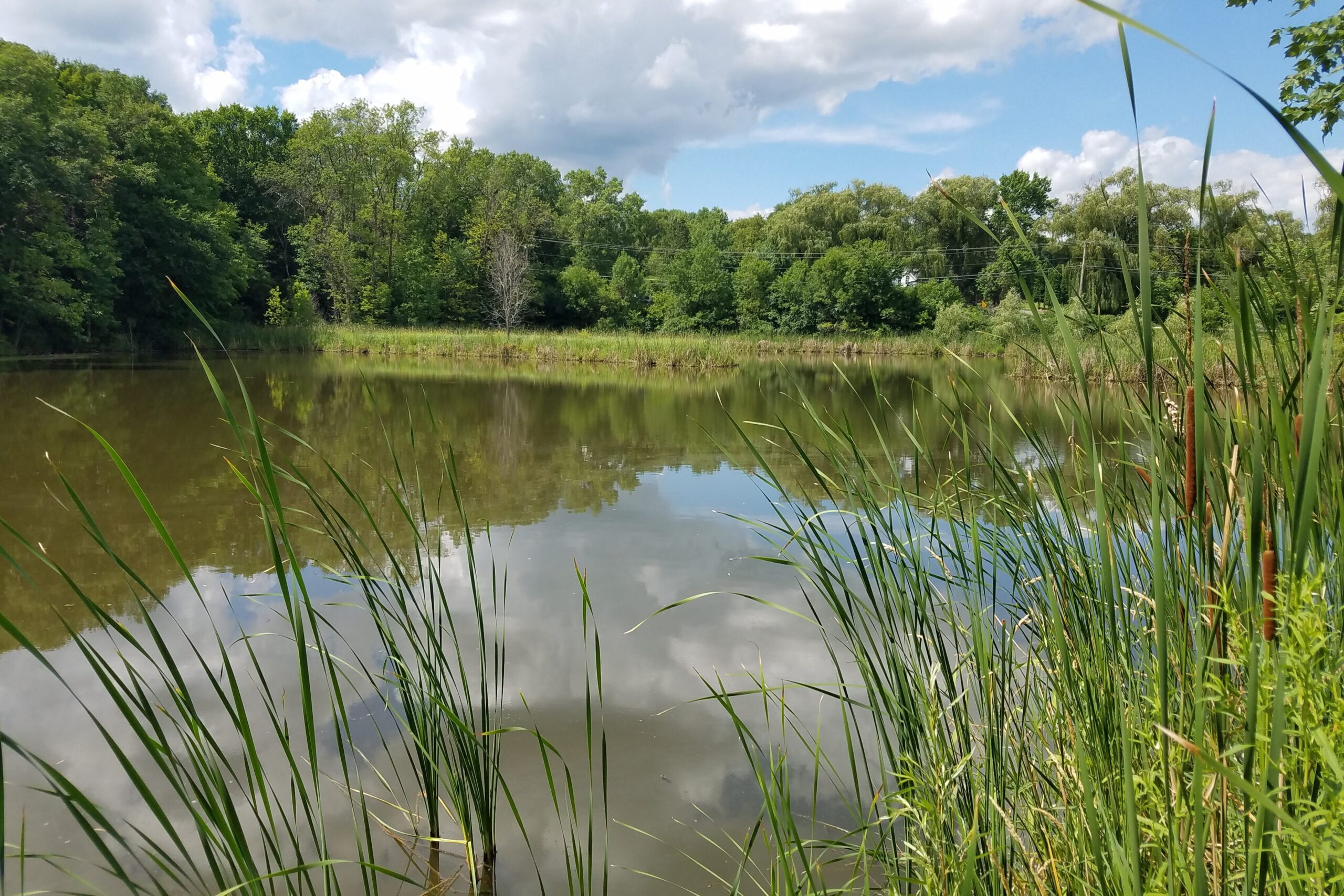
Overview
In 2008, MCWD restored a wetland adjacent to Painter Creek. This wetland restoration project involved excavating a new channel meander to direct flows from Painter Creek across the wetland to improve nutrient removal. To allow the new channel meander to function, an existing weir was also lowered, and a new weir was installed near County Road 26 to allow water to flow into the new meander. The restored wetlands now filter excess nutrients that flow in Painter Creek toward Lake Minnetonka’s Jennings Bay.
Jennings Bay of Lake Minnetonka is listed as impaired because of excess nutrients coming from Painter Creek. The lower levels of Painter Creek are also impaired from E. coli bacteria. Studies have shown that dissolved phosphorus plays a key role in the poor water quality of Jennings Bay. Recognizing that traditional methods of pollutant reduction would not be effective in reducing loading from the dissolved form of phosphorus, the wetland restoration was proposed to restore a natural system in this previously ditched area of the watershed.
Project Timeline

Planning Phase
Planning Phase
August 2002 – Project feasibility study conducted

Design Phase
Design Phase
May 2005 — Project design authorized
March 2006 — Final design approved

Construction Phase
Construction Phase
September 2008 — Construction begins
March 2010 — Construction ends

Project completion
Project Completion
March 2010 — Project complete
By the Numbers
3,000
feet
of streambank habitat restored
Project Highlights
- Excavation of a new channel to direct water across the wetland
- Lowering of the existing weir
- Installation of a new weir at Highway 26 that directs water through the new channel
- Vegetation restoration
- Habitat restoration
- Improved water quality in Painter Creek
Partnership
The Painter Creek Restoration Project was implemented solely by the Minnehaha Creek Watershed District.
Funding
Project Cost: $200,558
The Painter Creek Restoration Project was funded entirely by MCWD.

